|
Article by Sea Grant
Great Lakes charter boat captains are in the business of finding fish. They take recreational anglers out on the lakes, finding spots with the highest likelihood of landing a great catch. So how do they know where to go? Do they have a crystal fish ball? Though many captains have years of experience on the lakes, they also rely on technology to pinpoint specific locations. Many captains use websites like the Great Lakes Observing System (GLOS) or CoastWatch to obtain maps with Great Lakes surface water temperatures. They know that, because fish are cold-blooded, they are very dependent on the environment and particularly water temperatures. Other certain environmental factors also dictate where fish feed. Grade Levels:
Performance Expectations:
OBJECTIVES
BACKGROUND Steelhead trout belong to the family Salmonidae that includes all salmon, trout and chars. Steelhead are born in freshwater streams, where they spend the first years of life. They then swim out to the ocean or one of the Great Lakes where most of their growth occurs. Steelhead are also known as rainbow trout. However, they are typically called steelhead when they spend most of their lives in the open waters of the Great Lakes. Their life cycle is similar to that of Pacific salmon. Steelheads are indigenous to the Pacific coasts of North America and Asia, and have been successfully introduced to inland lakes like the Great Lakes. After spending between one to four growing seasons in the ocean or lake, steelhead return to their native freshwater stream to spawn. Though they are not native to the Great Lakes, Lake Michigan steelhead live a life that is very similar to that of their ocean-going relatives. Lake Michigan serves as a substitute for the ocean and they return to spawn in tributary streams. Steelhead in Lake Michigan – What Anglers Need to Know Think about being a charter captain or someone on the hunt for steelhead in Lake Michigan. What are the basics you should know? Scientific Name: Oncorhynchus mykiss. Members of the Salmonidae family include salmon, trout and char. Also called rainbow trout. Identifying Characteristics: Two dorsal fins, including an adipose fin, light-colored mouth and gums, small spots on tail. Average Size: Growth varies greatly, even within the same population. Mature fish are typically 16 inches in length and about 9-10 pounds, but may reach 36 inches and up to 20 pounds (40 centimeters and 4-5 kilograms, up to 91 centimeters and 9 kilograms). Lifespan: Typically 6-8 years in the Great Lakes region. Habitat: During the lake-dwelling portion of their lives, steelhead are often found in waters less than 35 feet (11 meters) deep with temperatures of 58-62 degrees Fahrenheit (F) or 14-17 degrees Celsius (C). In the spring and summer, steelhead are often found near stream outlets prior to moving upstream to spawn. Life Cycle: Steelhead mature in 3-5 years. Most steelhead return to their home stream — the stream in which they were born or planted — to spawn. Unlike Pacific salmon, steelhead in the Great Lakes do not necessarily die after spawning and are able to spawn more than once. A steelhead may spawn several times during its life, although most only spawn once or twice. Steelhead in the Great Lakes enter spawning streams between late October and early May. Most spawning occurs in the spring, with the peak of spawning occurring in mid-April. Eggs hatch in 4-7 weeks. Young steelhead, called parr, typically remain in their home stream for 1-3 years before migrating to the lake. Diet: Young steelhead feed on zooplankton and aquatic insects. During the lake-dwelling portion of their life cycle, steelhead eat small fish and insects. Steelhead feed primarily at mid-depths (the middle of the water column), but will also feed on surface insects. Feeding Strategy: Compared with salmon, steelhead have a slow attack speed. This makes them less-than-efficient predators of quick fish such as alewives and smelt. While most salmon are quick and efficient predators and can successfully hunt schools of small fish closer to shore, steelhead move to deeper waters to feed on an accumulation of bugs and slower fish, such as sticklebacks. Predators: In the Great Lakes, sea lamprey are the most common predator of all salmonid species. Other predators include: larger fish, fish-eating birds such as great blue heron and kingfisher, and mammals such as mink and raccoon. Reading the Cues Aquatic habitats are defined by environmental factors. If you know what to look for, these factors can provide clues to help find the best fishing spots. For example, fish prefer habitats that are within the fish’s optimal temperature range and provide access to food. Due to interactions of abiotic factors such as temperature, oxygen, pH level, light, nutrients, pressure, substrate and circulation, aquatic life is not evenly distributed, i.e., it is patchy and variable depending on the other influences at play. Anglers report better catches at thermal fronts than in nonfrontal regions — movement of steelhead in open water seems to be associated with thermal fronts. Thermal fronts are where water masses with significantly different temperatures meet or interface. This interface is a region where water temperatures rapidly change and are often abundant with aquatic life. Thermal fronts can offer both optimal temperatures and access to food. The range of temperatures and abundant food at thermal fronts can be clues to help you find steelhead and other fish in the Salmonidae family. Upwelling
Later in the season, fishing is influenced by thermal fronts and water temperatures associated with upwelling:Figure 3. Upwelling and Ekman Transport Diagram (source: American Meteorological Society) Upwelling occurs when strong winds push away surface waters allowing deeper, colder waters to rise to the surface. A good example is near Big Sable Point in eastern Lake Michigan (north of Ludington). Upwelling occurs near the shore caused by strong winds from the east, northeast or northwest — any wind that moves the nearshore water offshore or any prolonged wind that causes a strong north to south current. The bathymetry near Big Sable Point contributes to a cold-water upwelling associated with strong winds from the east, northeast or northwest. Near Big Sable Point, Lake Michigan becomes very deep just offshore. As warm surface waters are pushed away by winds, colder bottom waters ‘upwell’ to the surface (Figure 4). Deep waters nearshore at Big Sable Point are key. As warm surface waters are pushed away by the wind, deep cold waters near shore upwell to the surface (see Big Sable Point bathymetry). South or southwest (or even straight west winds) cause warm water to ‘pile up’ in the bay. Under these conditions, warm waters will be found as deep as 150 feet or more (typical depth of warm water is 60-70 feet). Temperature is less of a fish-catching factor as summer becomes fall, because fish enter river mouths and many move upstream. So what does all of this have to do with catching steelhead? Prey is often abundant at thermal fronts and fish in the family Salmonidae, particularly steelhead in eastern Lake Michigan, seem to be attracted to spring thermal fronts to feed on insects that originate on land (terrestrial) rather than the water. (We know this because researchers found that terrestrial insects were abundant in steelhead stomachs in the spring.) Accumulation of these insects is thought to be related to the eastern central Lake Michigan shoreline. Insects along steep, sandy cliffs are caught in rising air currents, and as the air cools over colder lake waters, they are deposited into the lake, essentially raining down food for steelhead and other fish. HOW TO FIND FISH IN LAKE MICHIGAN Knowing this, how can we apply it to find fish? Commercial, subsistence and recreational fishermen use surface water temperatures and visual clues to find thermal fronts. How to detect water surface temperatures:
Learning about Great Lakes surface water temperature contour maps:
In the spring, fishing is best at thermal bars nearshore. Look for tight contour lines following the shoreline with a 10-degree temperature change over the course of the lines. Fishing is best in the area outside of the series of contour lines. Thermal bars may be present until mid-June or possibly early July. When waters reach 60 degrees F, thermal bars no longer form. In the summer and early fall, fishing is best at upwelling areas. Look for rings of cooler water nearshore. (Offshore rings are likely errors related to clouds. The bathymetry and currents in Lake Michigan do not support offshore upwelling.) Fish Finders – Lesson 1: Fish_Finders_Lesson_1 ACTIVITY
LESSON SOURCES CoastWatch. Great Lakes water temperatures. Michigan State University (MSU) Remote Sensing and GIS Research and Outreach Services in East Lansing, Michigan, NOAA Great Lakes Environmental Research Laboratory and Michigan Sea Grant. Supported by MSU College of Agriculture and Natural Resources and MSU Extension. Accessed December 4, 2009. Spring thermal fronts and salmonine sport catches in Lake Ontario. 1993. North American Journal of Fisheries Management 13: 502-510. Authors: Aultman, D.C. and J.M. Haynes. Food of trout and salmon in Lake Ontario. 1986. Journal of Great Lakes Research. 12:200-205. Author: Brandt, S.B. Fact sheet explaining latitude and longitude. 2007. Institute for Fisheries Research, University of Michigan School of Natural Resources and Environment and Michigan Department of National Resources. Author: Geddes, C. Springtime steelhead produce great fishing action. 2006. Michigan Department of National Resources and Environment. Website accessed December 4, 2009. Water on the Web: Monitoring Minnesota Lakes on the Internet and Training Water Science Technicians for the Future – A National Online Curriculum using Advanced Technologies and Real-time Data. University of Minnesota-Duluth, Duluth, MN 55812. Authors: Munson, BH, Axler, R, Hagley C, Host G, Merrick G, Richards C. Website accessed December 1, 2009. DATA SOURCES Big Sable Point bathymetry. Coastwatch. Great Lakes water temperatures. Michigan State University (MSU) Remote Sensing and GIS Research and Outreach Services in East Lansing, Michigan, NOAA Great Lakes Environmental Research Laboratory and Michigan Sea Grant. Supported by MSU College of Agriculture and Natural Resources and MSU Extension. HarborView. Great Lakes observing system (GLOS) and University of Wisconsin Sea Grant extension program. Author: David Hart University of Wisconsin Sea Grant extension program. National Oceanic and Atmospheric Administration (NOAA). National Data Buoy Center. US Department of Commerce, NOAA, National Weather Service, National Data Buoy Center, Stennis Space Center, MS National Oceanic and Atmospheric Administration (NOAA). On-line Chart Viewer. NOAA Office of Coast Survey. Michigan Sea Grant helps to foster economic growth and protect Michigan’s coastal, Great Lakes resources through education, research and outreach. A collaborative effort of the University of Michigan and Michigan State University, Michigan Sea Grant is part of the NOAA-National Sea Grant network of 34 university-based programs. A cool Fall day in Dec '16. Fishing was a bit slow for the first half of the day but was able to round it out with three steelhead each from different year classes, which was great to see and very important for the fishery! Time for a new camera angle though, so stay tuned for the next videos. These are the folks who contribute the most to make steelheading in Ontario as great as it is! After a warm and very dry October, the fall started to turn around quickly with some heavy rainfalls and prolonged days of rain in early November. Steelhead were slow to arrive as temperatures were 5-10C above normal for several weeks. Niagara River has been reliable but but most rivers have just started to see their normal number of arrivals, even with three weeks of high water. Winds have been insane with 3-4 days of 40-80km/h each week. Things should normalize with November weather just arriving as I type. Looking forward seeing smaller crowds on the river as the temps drop, as there has been a lot of river traffic this fall! Fishing has been excellent these past three weeks, and we have limited openings left. Be sure to book soon if you are hoping for a fall trip!
Some Lake Ontario steelhead are suffering a vitamin B1 deficiency making them incapable of synthesizing the sugars that are critical for giving them energy, therefore causing death.... scary!!
Tarnished Chrome Jeff Wall | Nomad Adventures [email protected] This article is intended to provide basic information to anyone wishing to take advantage of the spring Great Lakes Steelhead fishery. Although we are targeting migratory rainbow trout, there are many incidental catches that fill our day with joy and help us learn tactics for catching other species we may encounter. Rainbow Trout (Oncorhynchus mykiss) is a species of salmonid which is native to the cold water tributaries of Pacific Asia and North America. Steelhead is an anadromous(sea-run), or in this case, lake-run form of Coastal Rainbow Trout(Oncorhynchus mykiss Irideus) that have been introduced to Great Lakes tributaries. These fish spend their first 1-2 years in the tributaries, then enter the Great Lakes, to later migrate back to their natal streams when they reach spawning maturity. Primary spawning runs occur in the Great Lakes tributaries from late March to late May depending on the winter. Season and HabitatTiming as they say is everything. Especially on a sunny, warm spring day where the lake hasn't been stirred up much. If the water is clear and sun is high, then I'm already off the water looking at my pictures of the day's catch. A light wind is not a bad thing either provided it is in your favour. I prefer to fish a small chop when fishing steelhead and other minnow eaters. It displaces the baitfish more and allows for a wider, deeper zone to troll through. Fishing can be equally as good in the last two hours of daylight too. Finding a lightly wind blown warm shoreline near a creek or river can give whole new perspective on Great Lakes kayak fishing if you time it right! A spot where the sun has warmed all day long with a decent outflow nearby will start to get a trickle of minnows just before dusk that can provide fast and furious action as the sun disappears. Most of the time you are fishing less than 20' of water. Fish are shallow as 5' when the sun comes up and usually stay in less than 20' until then light starts to really penetrate then water. Try to find temperature gradients close to a mud line as they are your best indicator of where to start fishing. The transitioning water colour from brown to green is the area you want to focus on the most. This is where the bait are hanging out to avoid being in plain sight. Zig-zag trolling in and out of the mud line will surely get you bit. This is the season where kayaks have a real advantage over motorboats because of the relatively silent trolling capability. There is no need to run inline planer boards unless you do it to clear other rods when trolling multiple. If you have a leg propelled kayak like a Hobie Mirage series then things are even that much more simplified with hands free fishing. We primarily target spring Steelhead before they enter the tributaries to go about their reproductive business. Anytime that conditions allow and you feel you are capable of dealing with them is the right time to go. This article is not about safety so if you feel there may be a risk and are not comfortable with it, then do not go. Steelhead begin entering Great Lakes rivers in October and can still be around in early June. Spring runs are more consistent from April to mid May. Once they are safely higher up in the system, it is our practice to give them free passage. Although we are not afraid to go and pound on a fresh run of fish near the lower stretches of rivers, we prefer letting those who passed the gauntlet, to carry on and make lots of future angling opportunities. Especially on rivers that yield wild fish! Locating and Timing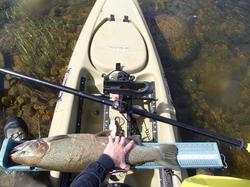 The old spawned out warrior in this picture is a catch we try to avoid but can't always when targeting migrating fish around rivers. For this reason we tend to concentrate our efforts in the lake near the river, rather than in it. He took about 5 mins to revive even in icy cold water. A chrome bright fish in the spring does not mean it is a fresh arrival! Many steelhead finish their spawning ritual before the river season opens, and they are almost fully healed from their wounds, leaving them with their beautiful silver sheen. These kelts are the most sensitive of the lot. They are extremely hungry and feed ravenously on anything they can find. They are also very susceptible to death if hooked and and fought to exhaustion with less oxygen in the warming rivers. They cannot recover since they have no reserve body mass to fall back on. Please do not target these fish! 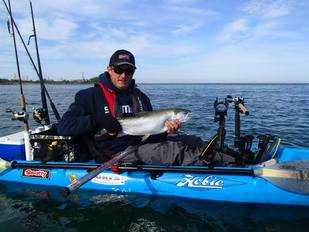 This spring hen was caught in Lake Huron near a major tributary. She was fully recovered from spawning and caught June 1 gorging herself on shiners when she hit a Live Target Rainbow Smelt. Anything resembling a shiner or smelt style minnow and fished near a river outlet on the Great Lakes will get bit... by something. It will most likely be a steelhead, coho salmon, or brown trout but could be any number of other species following the bait. Move around in the lake until you mark bait or spot it. Last spring we had the pleasure of guiding Sportsman360 TV host Owen Nolan and his guest co-host former NHLer Chris Simon for steelhead in Southern Ontario. It was the worst weather we had ever fished in let alone guide anyone! Things turned out very good, and the show will be airing for the first time tomorrow, and running all week long. Sportsman360TV: Ontario Steelhead - WildTV(Ch 393) Tues 7:30pm, Thurs 4:30pm, Fri 3:30pm World Fishing Network(Ch 426) Tues 10pm, Wed 1pm, Sat 1pm Will post the video in its entirety when it is released. Have a look if you get either of those channels. Here is the trailer Hope you enjoy! Lake Huron Spring Chinook SalmonJeff Wall | Nomad Adventures [email protected] The groundhog said six more weeks of winter from Feb 2.... he was wrong! It has been a lot of years, close to 20 since I was able to put some decent time in on the spring Great Lakes fishery. April is normally our second busiest month for river guiding, but the winter that wouldn't go away gave us some time for personal fishing. Canadian kayak fishing guide Jeff Wall showcases his spring catch. Over 40 fish caught in six outings last spring. All were salmon or trout except one giant out of season walleye. Steelhead, Coho Salmon, Brown Trout, Chinook Salmon, Atlantic Salmon, Walleye, Lake Trout were all caught and released over six separate days of fishing. Long lining shallow crankbaits on light lines pretty much sums up the spring kayak fishing in Ontario for the Great Lakes region. We employed a variety of minnow baits, smaller spoons, and kwikfish style lures. Slow trolling with abrupt direction changes were the ticket in the open water trolling but crashing two lures thru the baitfish schools got us several doubles. I don't have to tell you how exciting that is in a kayak! Please always consider best practices when heading out on the Great Lakes, especially when it is still winter. Better yet, hire a guide! Be sure to look up Nomad Adventures for your next spring kayak fishing trip. Hope you enjoy! Giant Lake Ontario WalleyeLake Ontario Atlantic Salmonby Bruce Ranta April 25th, 2004
Migratory rainbow trout, called steelhead, are highly prized trophies. They’re beautiful fish, leaping titans when hooked and a culinary delight on the plate. For many anglers, steelhead are the ultimate challenge. Although they’re the same species, steelhead of the Great Lakes and the Pacific Ocean are different from rainbow trout in smaller inland lakes. The term steelhead describes a rainbow trout that was born in a stream, migrated to the sea, and returned to the stream as an adult to spawn. Such fish are said to be anadromous. Given that the Great Lakes are every bit seas, albeit freshwater ones, a steelhead in Ontario refers specifically to the anadromous rainbow trout found in these lakes and their tributaries. Elsewhere, they’re merely rainbow trout. Or are they? Fishy History In 1989, rainbow and cutthroat trout were moved by taxonomists from the genus Salmo, which includes Atlantic salmon and brown trout, to the genus Oncorhynchus, which includes pink, sockeye, chum, Chinook, and coho salmon. Technically, the rainbow trout (oncorhynchus mykiss) isn’t a trout at all, but a salmon. It’s also the same species as the East Asian trout. While long a fixture of Ontario’s fishery, rainbows are non-native to the province. They were once found only on the West Coast of North America, but humans have widely transplanted this magnificent fish. Today, one of the most important transplanted, self-sustaining populations of steelhead in the world is in the Great Lakes. The first transplants to the Great Lakes watershed began in the U.S. in 1874, but the first introductions of steelhead to the lakes proper took place when the Aux Sables River was stocked in 1876. On the Ontario side, the first fish were brought in privately sometime in the 1890s to a headwater pond on the Nottawasaga River. The first known recovery of a steelhead in Ontario was a 4-pounder taken near Duck Island, near Manitoulin Island, in 1904. With an introduction in 1878 in the State of New York, the Lake Ontario watershed was the second Great Lake to receive rainbows. By 1920, they were well established in a number of rivers on the U.S. side. The first seeding on the Ontario side took place in 1922 into a pond in Riverside Park, Toronto. The Lake Erie-St. Clair watershed was first stocked in 1882, but no fish were recorded in Ontario waters until 1920. The first Ontario stocking was in 1936 in Norfolk County creeks. Lake Superior was the last of the Great Lakes to receive rainbows, and this time the introduction was initiated by Ontario. Fish were stocked near Sault Ste. Marie in 1883, followed shortly by American releases, also in the eastern basin. By the turn of the century, large numbers of rainbows up to 8 pounds were being taken by commercial netters targeting lake trout. Not surprisingly, Great Lakes rainbows are not a pure strain. They originate from a long history of stocking both wild and domestic strains on both sides of the border. It’s even possible there was some early hybridization with cutthroat trout, a species known to interbreed with rainbows in the wild. Cutthroats were planted in a number of New York and Michigan tributaries in the late 1800s. Compared with resident stream rainbows, steelhead of the open lakes are brighter and usually silvery. The clearer the water, the brighter the fish. Some lake fish look almost nickel-plated. Once they return to natal streams, they begin to darken and display a bright red band along the body. The steelhead doesn’t live to a ripe old age, especially when compared with long-lived Methuselahs like lake trout. Few steelhead live to see their ninth birthday, and generally life expectancy is only 6 to 7 years. |
FISHING NEWS ONTARIOOntario and Great Lakes region salmon, steelhead, and migratory trout fishing articles, information, news, and reports. Stay up to date on our most recent trips, events, tournaments, and general news on adventure fishing and kayak fishing in Ontario and Canada. Archives
April 2021
Categories
All
Links |

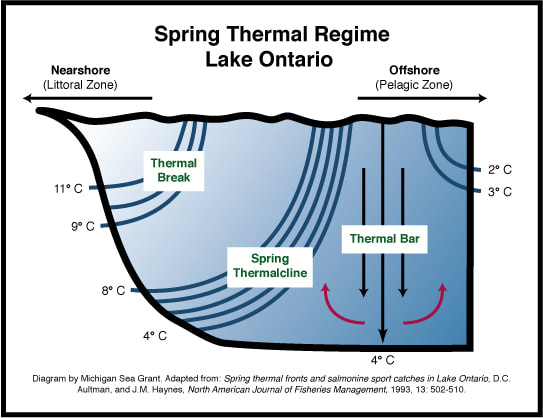
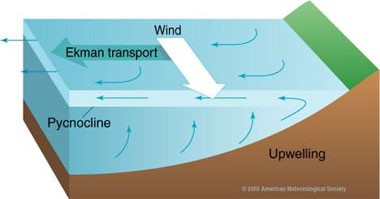
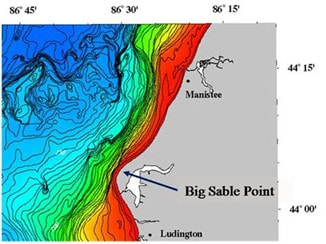
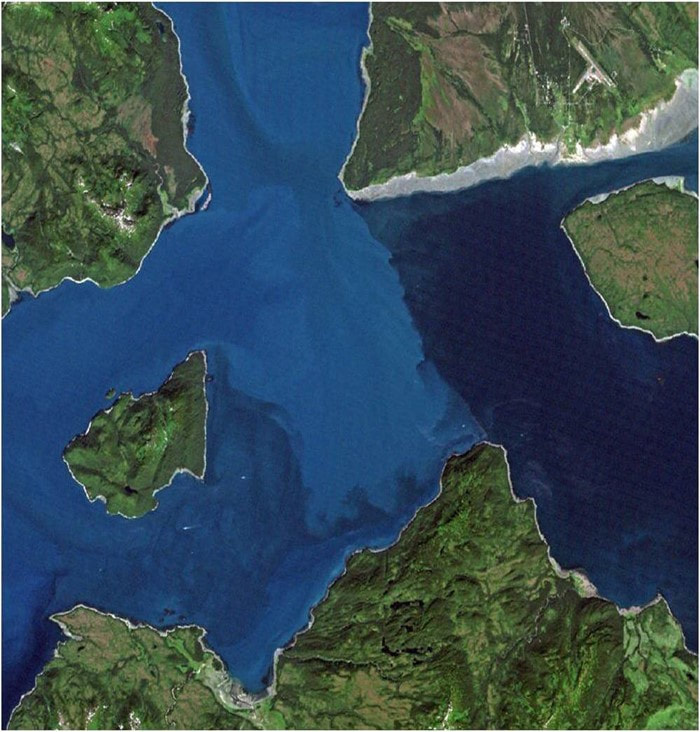
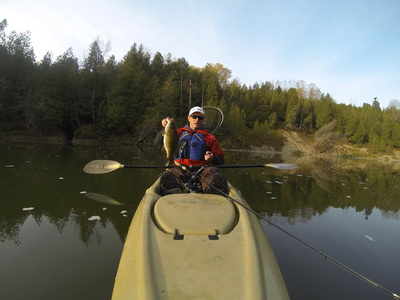
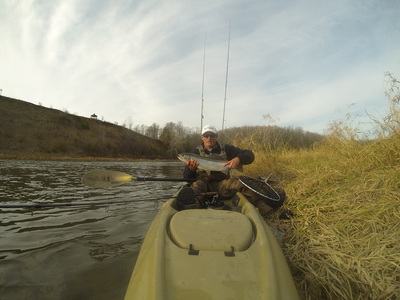
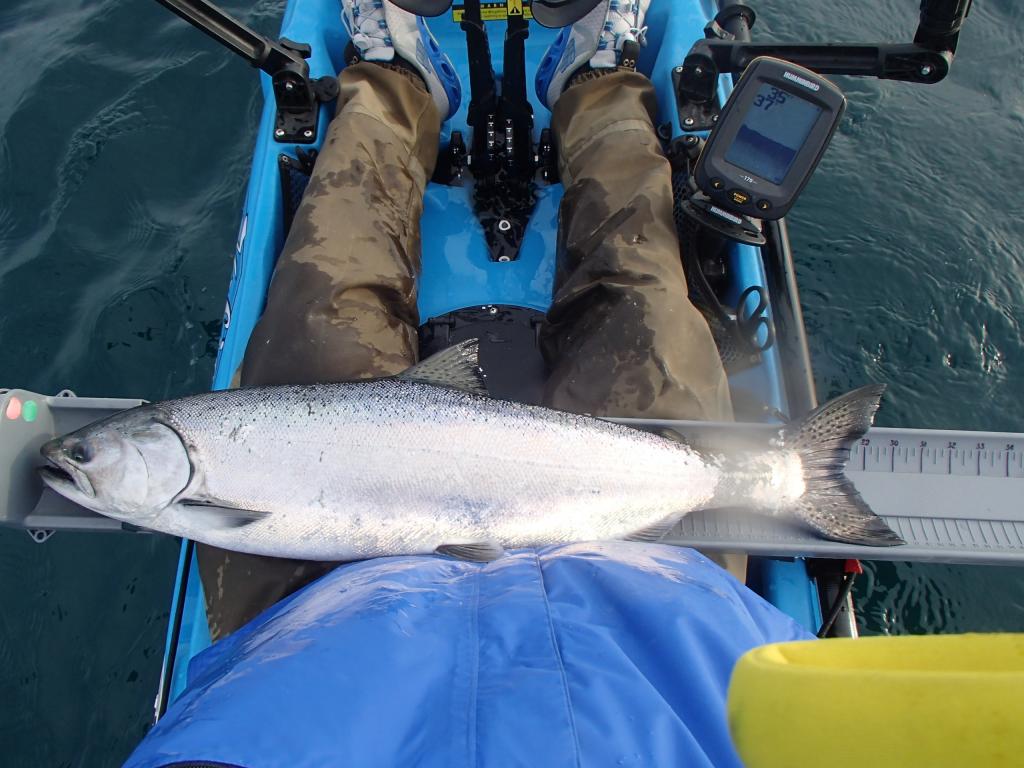
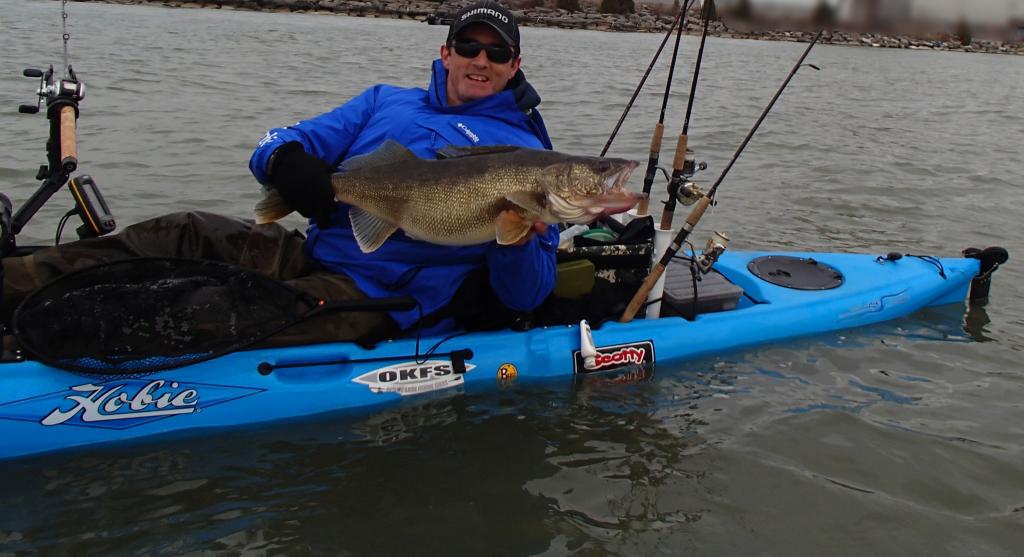
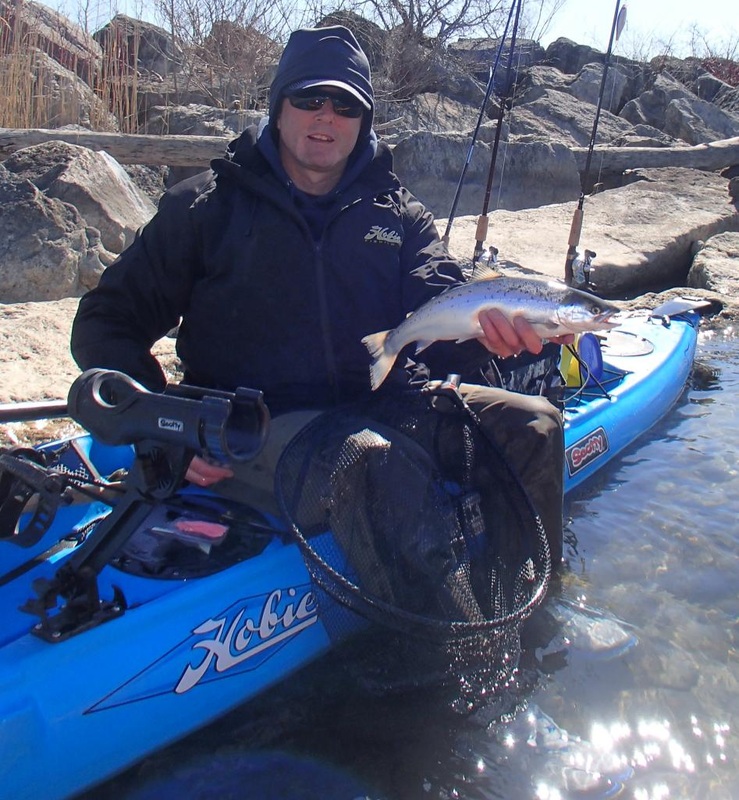
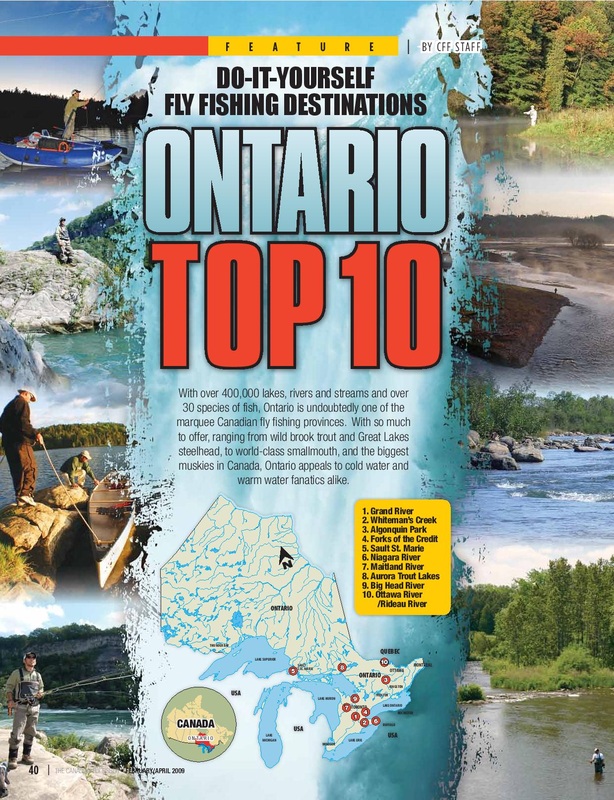


 RSS Feed
RSS Feed